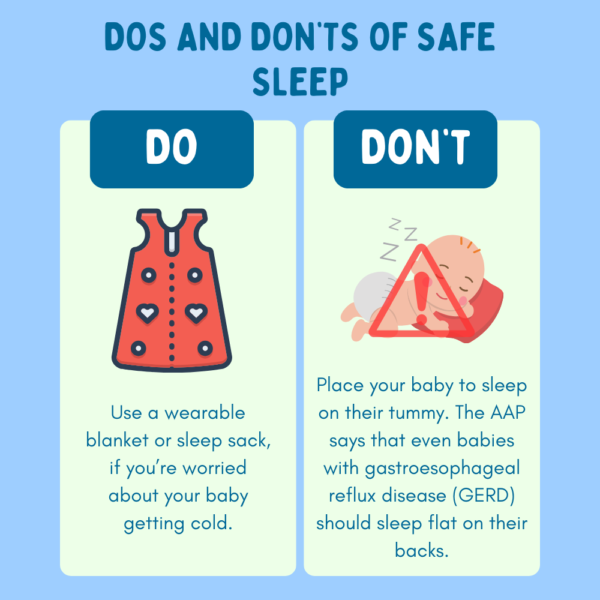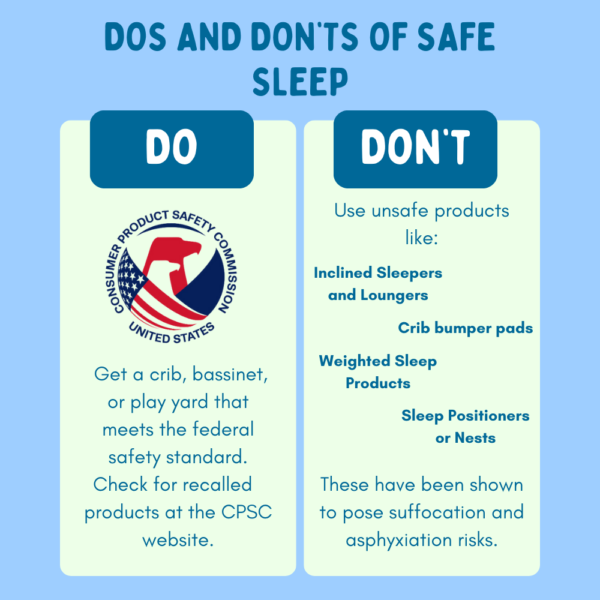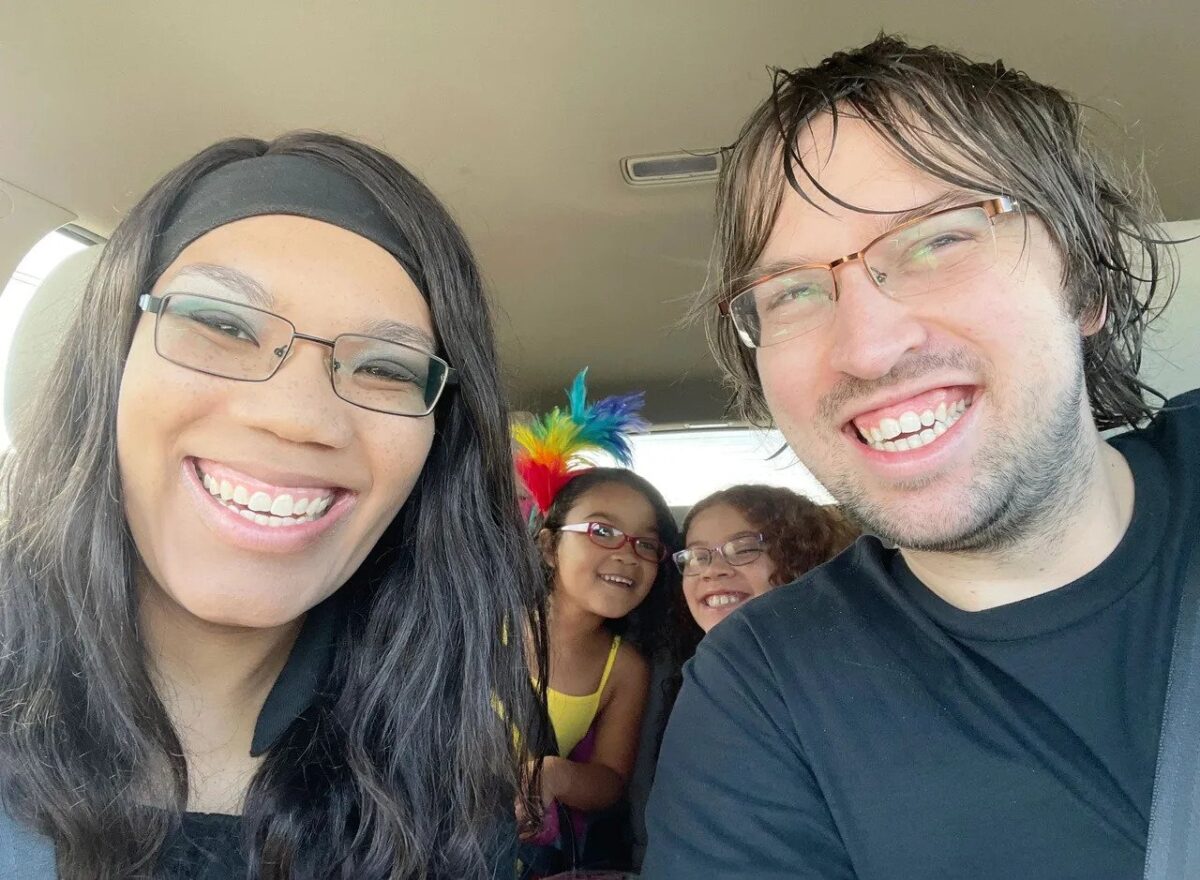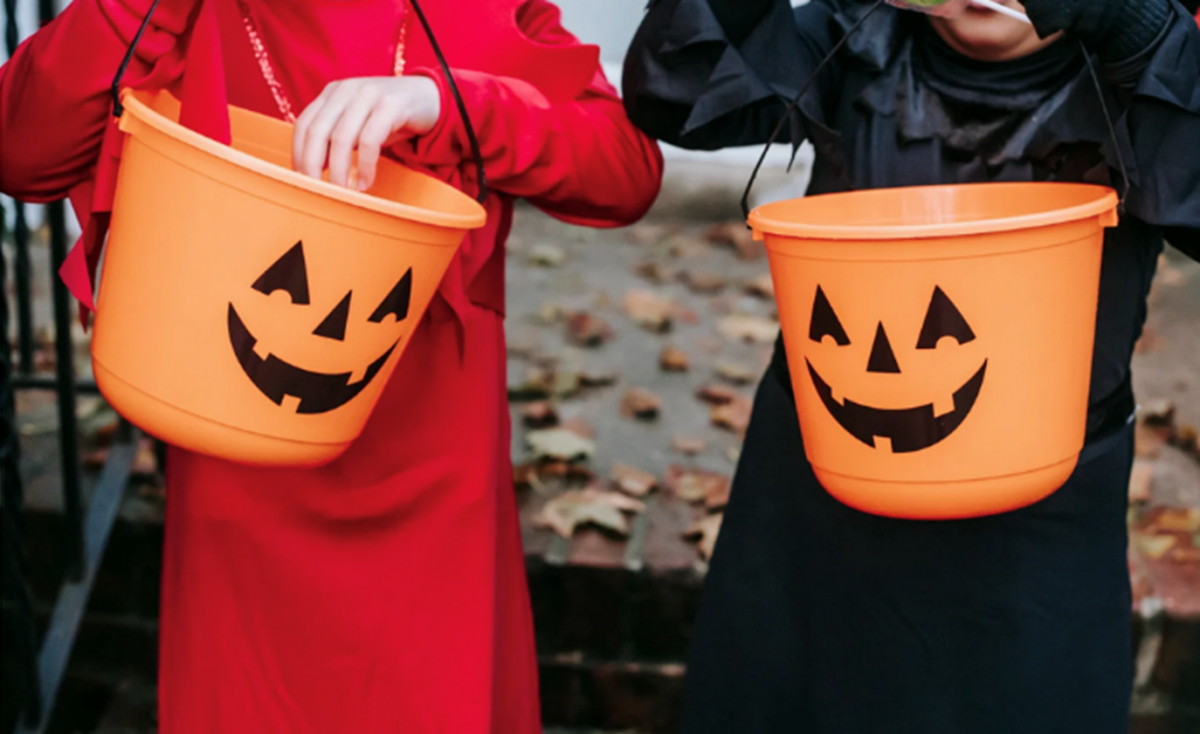Each year, about 3,400 infants in the U.S. die unexpectedly during sleep. October is Infant Safe Sleep Awareness Month, so here are some reminders about the Dos and Don’ts of safe sleep.

DO follow the ABCs of safe sleep: place the baby Alone on their Backs in their own sleep space, in a Crib, bassinet, or play yard. This should be firm and flat.
DON’T place anything else in the sleep area with the baby. This includes pillows, blankets, stuffed animals, or bumper pads. A crib mattress with a tightly fitted sheet is all that you need.

DO use a wearable blanket or sleep sack if you are worried about the cold. In general, you should dress your baby in only one layer more than you’re wearing.
DON’T place your baby to sleep on their tummy. Some parents may worry that babies will choke when they’re on their backs, but your baby’s airway anatomy and their gag reflex will prevent that. The AAP recommends that even babies with gastroesophageal reflux disease (GERD) should sleep flat on their backs.
 DO use a crib, bassinet, or play yard that meets the federal safety standard. Check for recalled cribs and other sleep products at the CPSC Recalls page.
DO use a crib, bassinet, or play yard that meets the federal safety standard. Check for recalled cribs and other sleep products at the CPSC Recalls page.
DON’T use unsafe products like inclined sleepers and loungers, crib bumper pads, weighted sleep products, and sleep positioners or nests. These products have been shown to pose suffocation or asphyxiation risks.
 DO room share with your baby by placing their sleep area close to your bed for at least the first six months. According to the AAP, this can decrease the risk of SIDS by as much as 50% and it’s much safer than bed sharing.
DO room share with your baby by placing their sleep area close to your bed for at least the first six months. According to the AAP, this can decrease the risk of SIDS by as much as 50% and it’s much safer than bed sharing.
DON’T bed share with your baby. The AAP doesn’t recommend bed sharing under any circumstances. If you bring your baby into your bed to feed or comfort them, place them in their own sleep space when you’re ready to go to sleep.
Read the AAP Guidelines on Safe Sleep and watch KID’s Safe Sleep Video for more information. Follow KID on Facebook, Instagram, Twitter, and Tik Tok to learn more about KID’s work and to get up to date safe sleep tips and product recall information.


